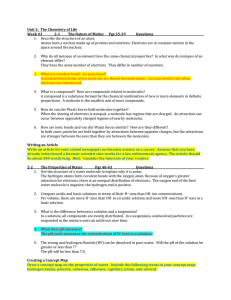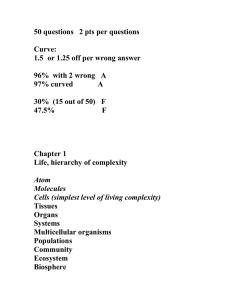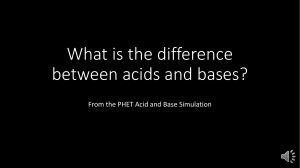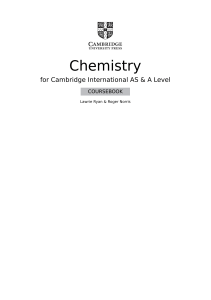Test Review:
advertisement
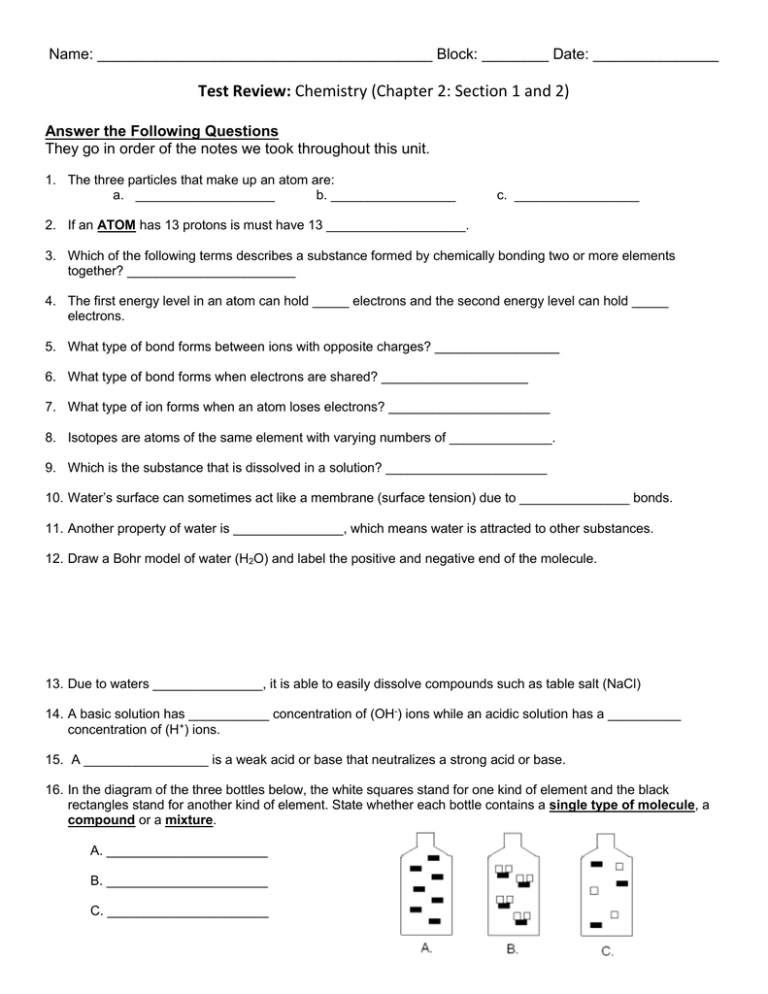
Name: ________________________________________ Block: ________ Date: _______________ Test Review: Chemistry (Chapter 2: Section 1 and 2) Answer the Following Questions They go in order of the notes we took throughout this unit. 1. The three particles that make up an atom are: a. ___________________ b. _________________ c. _________________ 2. If an ATOM has 13 protons is must have 13 ___________________. 3. Which of the following terms describes a substance formed by chemically bonding two or more elements together? _______________________ 4. The first energy level in an atom can hold _____ electrons and the second energy level can hold _____ electrons. 5. What type of bond forms between ions with opposite charges? _________________ 6. What type of bond forms when electrons are shared? ____________________ 7. What type of ion forms when an atom loses electrons? ______________________ 8. Isotopes are atoms of the same element with varying numbers of ______________. 9. Which is the substance that is dissolved in a solution? ______________________ 10. Water’s surface can sometimes act like a membrane (surface tension) due to _______________ bonds. 11. Another property of water is _______________, which means water is attracted to other substances. 12. Draw a Bohr model of water (H2O) and label the positive and negative end of the molecule. 13. Due to waters _______________, it is able to easily dissolve compounds such as table salt (NaCl) 14. A basic solution has ___________ concentration of (OH-) ions while an acidic solution has a __________ concentration of (H+) ions. 15. A _________________ is a weak acid or base that neutralizes a strong acid or base. 16. In the diagram of the three bottles below, the white squares stand for one kind of element and the black rectangles stand for another kind of element. State whether each bottle contains a single type of molecule, a compound or a mixture. A. ______________________ B. ______________________ C. ______________________ Answer the following Please come see me in the mornings if you need help thinking through your answer. A. Explain why a belly flop hurts. Make sure the use the following vocabulary in your answer: cohesion, hydrogen bonds, surface tension, polarity and energy. B. Lithium Fluoride (LiF) is formed from two elements: Lithium (Li), which originally has one valence electron, and Fluorine (F), which originally has seven valence electrons. What type of bond exists in LiF? Explain and diagram what happens during the formation of this ionic bond. C. A chemist is working with two solutions: 1. A sodium hydroxide (NaOH) solution, which produces hydroxide ions (OH-). 2. A hydrogen bromide (HBr) solution, which produces hydrogen ions (H+). State whether each of these two solutions is an acid or a base. What would you expect to find about the range of the pH for each solution and the concentration of H + and OH- ions.


